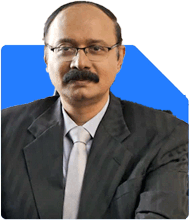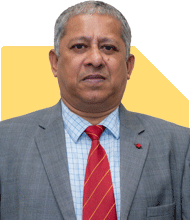Dear Sir,
My home loan is 24.5 LAC. And it's started from last year April 2024, my emi is 30,600 per month for 10 years, if i paid 10 LAC in Jan 2026 it will be beneficial for me or wait for sometime to pay pre closure amount
Ans: Your question is very timely and thoughtful.
You have already completed over one year of EMI payments.
You are also planning a Rs. 10 lakh prepayment in Jan 2026.
This shows strong discipline and intention to reduce debt early.
That is highly appreciated.
Let’s evaluate the benefit from all angles before making the decision.
Let’s assess your EMI schedule, tax benefits, interest savings, and liquidity needs.
We will also look at emotional peace, risk readiness, and overall financial health.
» EMI Tenure and Loan Progress
– Your loan began in April 2024. EMI is Rs. 30,600 for 10 years.
– By Jan 2026, you would have paid 21 EMIs. That is nearly 2 years of repayment.
– You would still have around 99 EMIs pending after Jan 2026.
– Most interest is paid in the first few years. That’s how home loan schedules work.
– So prepayment at this stage can save you substantial interest.
– But, the benefit must be compared with your other financial needs.
– This is not only about saving interest. It is about holistic financial planning.
» Interest Cost Evaluation and Savings Opportunity
– Your home loan interest rate is not mentioned. But let us assume a normal range.
– Most floating-rate loans now charge 8.5% to 9.5% annually.
– Prepaying Rs. 10 lakhs will reduce the outstanding principal sharply.
– As a result, the total interest over the loan period will reduce.
– You may save many lakhs over the long term by doing this early prepayment.
– You will also reduce your EMI period or future EMI amount.
– That helps you become debt-free faster.
– But, timing matters. January 2026 is still over 5 months away.
– You must consider where that Rs. 10 lakhs is now kept.
– Is it earning anything? If kept idle in savings, it gives low returns.
– In that case, prepayment gives better value.
– But if it is growing in mutual funds or long-term instruments, returns may be higher.
– Compare this interest cost versus what you earn from that Rs. 10 lakh.
– You must also think about safety, peace of mind, and future stability.
» Tax Benefits on Home Loan and Prepayment Impact
– Under Sec 24(b), you get deduction of up to Rs. 2 lakhs on home loan interest.
– This reduces your taxable income. Helps especially if you are in the 20% or 30% slab.
– Also, under Sec 80C, you get Rs. 1.5 lakh deduction for principal.
– But that Rs. 1.5 lakh 80C is usually covered by EPF, PPF, insurance, ELSS, etc.
– If you prepay Rs. 10 lakh, your interest in future years may fall.
– Then, the Rs. 2 lakh interest deduction under Sec 24(b) may not be fully used.
– But remember, you are spending Rs. 10 lakhs to save Rs. 2-3 lakhs of tax.
– That alone should not decide the choice.
– Interest saved is usually more than tax benefit lost in the long run.
– Prepayment still makes sense. But only if you are not compromising other goals.
– Always assess tax benefit as a secondary aspect, not the main reason.
» Your Liquidity and Emergency Readiness
– The biggest question is: Will you have enough money left after prepayment?
– Will you still have emergency funds of 6 to 12 months of expenses?
– Will you have cash for job loss, health issues, or family needs?
– Rs. 10 lakh is a big amount. Once paid, you cannot get it back easily.
– Banks do not refund prepayments. So you must be ready for cash crunch.
– If you have other liquid savings of at least Rs. 3 to 5 lakhs, then it is safe.
– But if this Rs. 10 lakh is your full backup, wait before prepaying.
– You must not become asset-rich but cash-poor.
– Also, do not disturb investments set for your long-term goals.
– Check how your mutual funds, PF, PPF, child goals, and retirement are aligned.
– Your financial safety net should never be at risk due to a home loan prepayment.
» Emotional Peace and Debt Reduction Mindset
– Paying off loans early gives peace of mind.
– Mentally, it feels lighter to reduce your EMI burden.
– For many families, freedom from loans matters more than returns from investment.
– If this Rs. 10 lakh is not required for your next 5 years, then prepaying is peaceful.
– But if the same money is helping you sleep better by keeping it in hand, wait.
– Your comfort and security are more important than any math.
– Financial planning is not only numbers. It is also emotional readiness.
– A good Certified Financial Planner balances both head and heart.
– If you feel better seeing lesser EMIs or faster closure, then go ahead with prepayment.
– If you fear losing liquidity or missing opportunities, then wait.
– In either case, the aim is to stay financially strong, not just interest-efficient.
» Other Choices to Use That Rs. 10 Lakh
– If you are not fully prepared for long-term goals, this Rs. 10 lakh may help.
– Retirement corpus, child education, spouse goals — all need investment.
– If those are underfunded, invest this Rs. 10 lakh in mutual funds.
– But not in index funds or direct funds.
– Index funds may look cheap, but they follow the market blindly.
– They underperform in volatile or sideways markets.
– Actively managed mutual funds by experienced managers adapt better.
– Direct funds also seem cheaper on surface.
– But there is no support, guidance, or review.
– Regular plans through a qualified MFD with CFP guidance add long-term value.
– The extra 0.5% cost gives better selection, periodic review, and mistake-avoidance.
– That brings better return than direct, unmanaged investing.
– So if you delay prepayment, don’t keep that Rs. 10 lakh idle.
– Put it to work through a long-term, diversified, tax-aware mutual fund portfolio.
– Match it to your goals, age, and risk appetite.
– Use only debt funds for less than 3 years. Use equity for more than 5 years.
– Also follow the updated capital gains tax rules now in force.
– These will apply when you exit mutual funds later.
– If this Rs. 10 lakh is not required in near future, investing may grow your wealth.
– If this feels unsafe, then home loan prepayment is still a good call.
» Ideal Approach Based on Situation
– If you have no major upcoming expense, then early prepayment is useful.
– If your emergency fund is untouched, then this move is secure.
– If your long-term goals are already funded, prepayment clears debt faster.
– If interest rate is above 9%, prepayment becomes even more beneficial.
– If job is stable and no income interruption is foreseen, go ahead.
– But if any of these are weak or uncertain, do not hurry.
– Wait for 6-12 months. Observe how rates, income, and expenses move.
– Meanwhile, invest that Rs. 10 lakh in a short-term fund with liquidity.
– Let that money earn better than savings account.
– If situation remains strong by Jan 2026, you may prepay with full confidence.
– Else, you can decide again at that point based on comfort and readiness.
– Either way, you are still progressing.
– Both options — prepayment or investing — are productive, if handled with thought.
» Finally
– You are thinking in the right direction. That’s the best start already.
– You are not ignoring the EMI burden. You want to plan ahead.
– That is very encouraging.
– Do not feel forced to prepay or delay.
– The right answer depends on your comfort, liquidity, and goals.
– Early prepayment is good if your financial base is ready.
– But there is no harm in waiting a few more months and reassessing.
– Peace and clarity are more important than urgency.
– You can also take part prepayment route. Pay Rs. 5 lakh in Jan 2026.
– Keep another Rs. 5 lakh for emergency or mutual fund.
– That brings the best of both.
– Stay debt-free, but also stay liquid and goal-focused.
– A Certified Financial Planner can help you model both paths and take balanced action.
– The right move is one that fits your full financial picture — not just the EMI part.
– Keep going strong.
– You are already ahead of many by asking this question today.
Best Regards,
K. Ramalingam, MBA, CFP,
Chief Financial Planner,
www.holisticinvestment.in
https://www.youtube.com/@HolisticInvestment























